
Omplexity顾问团队参与过全球超过六十个系统图绘製的大型专案,过往的合作客户包含Google, Hitachi, 广达, Nike, 微星科技, 联合国, 世界银行及世界经济论坛等机构等客户。 创办人薛乔仁博士毕业于哈佛大学与麻省理工学院,是国际知名的系统变革专家。 http://www.omplexity.com
Discuss the reasons for employee turnover from the system diagram

According to the Bureau of Labor Statistics, the number of employees leaving the United States in 2021 will reach a record high - a total of 68.9 million workers will leave, of which 47.4 million are "voluntary departures" (about 70%), forming the so-called "" Great Resignation. Taiwan, which is more than 10,000 kilometers away, is also facing the dilemma of rising numbers of quitters. The General Accounting Office of the Executive Yuan mentioned that in 2020, the number of people leaving Taiwan will exceed the 2 million mark. After the financial tsunami in 1990, it was rare for the number of people to leave jobs to be higher than the number of people employed. In the face of the increasingly severe talent shortage, how to keep the existing employees will be a key issue that enterprises will face up to.
Founded in 1998, Company A is a manufacturing company with around 100 employees. The biggest problem facing now is "the number of departures keeps rising", so I hope to seek help from Omplexity to achieve systemic change. This system diagram will focus on the key core of "turnovers".
The following will discuss the existing system from three aspects: "individual", "team", and "overall organization" according to the characteristics of the reasons for leaving, and provide solutions for specific issues.
Before starting, I would like to briefly define the knowledge points you may need to use:
causation
- Positive correlation (indicated by solid line)
The two variables in the system have a direct causal relationship and change in the same direction, such as the relationship between "cola intake" and "weight". That is to say, when "cola intake" increases, "weight" also increases, and vice versa.
- Negative correlation (indicated by dotted line)
The two variables in the system have a direct causal relationship and change in opposite directions, such as the relationship between "number of people wearing masks" and "confirmed cases". That is to say, when the "number of people wearing masks" increases, the "confirmed cases" will decrease. And when the "number of people wearing masks" decreases, the "confirmed cases" will increase.
system loop
- Reinforcing Loop (hereinafter referred to as R)
A reinforcement loop is when a trend continues to expand itself, which may be a virtuous or vicious cycle. Generally speaking, a loop with all positive correlations or an even number of negative correlation links is an enhanced loop.
- Balancing Loop (hereinafter referred to as B)
The adjustment loop refers to a trend gradually approaching the target, possibly from the upper or lower end of the target. Generally speaking, a loop with an odd number of negatively correlated links is a regulation loop.
Founded in 1998, Company A is a manufacturing company with around 100 employees.

personal
"Director Dear, after careful consideration, due to personal health factors, he decided to resign from the company as a salesperson. Thank you for these days..." This is the third resignation letter received by the business department manager in the past six months. Effective subordinates also sent a resignation letter today, which made him quite frustrated. On the other hand, the employees of the marketing department have not changed much in the past 1 to 2 years, and there have even been stable expansions.
R1 talent shortage
In the past six months, more senior employees have left one after another, and although new people have been recruited, they are not familiar with the company's business, and their self-learning speed is not fast enough, so that the workload of existing employees does not increase but decreases. Over the past few months, the health of senior employees has deteriorated.

R2 health affects productivity
The physical discomfort of employees affects their concentration, which in turn leads to a significant drop in work efficiency. The supervisor discovers that customer visit reports that employees used to be able to complete in 3 days are now taking 1 week.
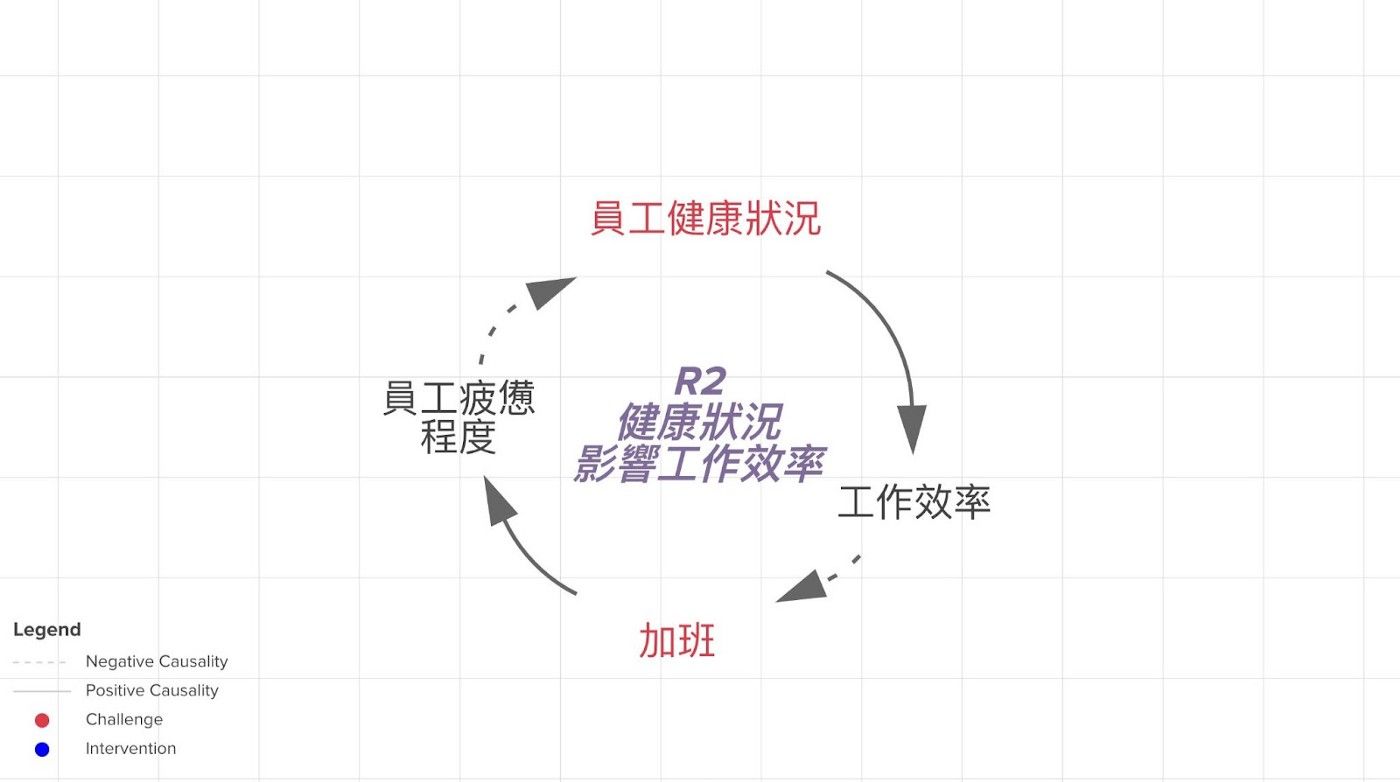
B3 Working overtime to complete work
Although the frequency of employees requesting half-day leave in the past 1-2 months has increased, they still work overtime on their own when they are in good condition, and often leave work later than the supervisor, but they still enter the office on time in the morning.

R4 Health Affects Output Quality
The supervisor is also troubled when he sees that the employees are still working hard, but the quality of the reports handed in is not satisfactory. When evaluating performance, in order to prevent employees from leaving, they had to turn a blind eye and give a good evaluation.
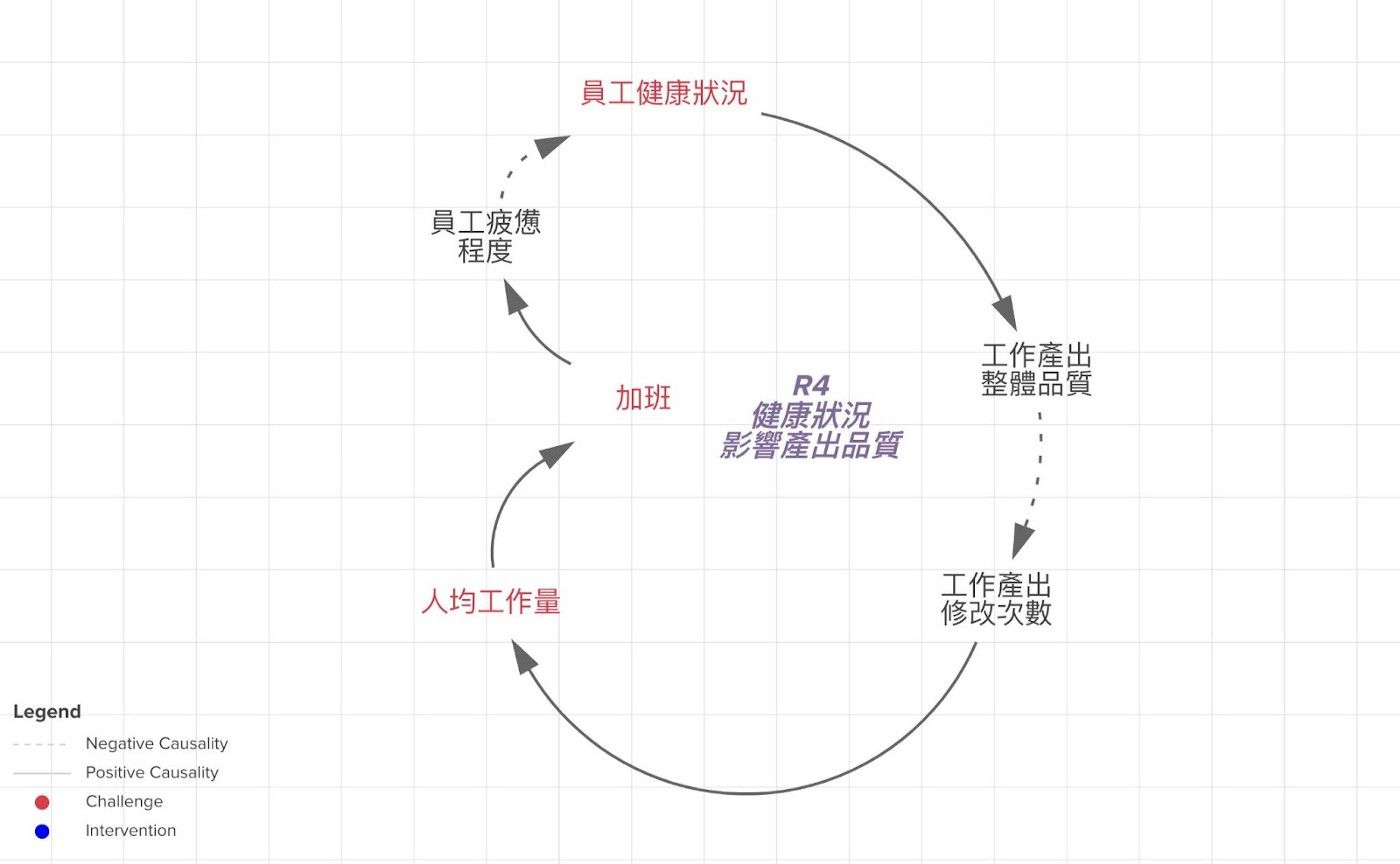
Overtime can get the job done in the short term, but it's not a long-term solution. Health problems caused by overtime will further affect work efficiency and output quality, so that the workload will not increase but decrease. Unable to last employees may choose to leave, which is even worse for teams that are already short of manpower.
team
"I heard that someone was scolded and cried by the supervisor again...", "He has been with the supervisor for so long, and he has to be told so badly..." Colleagues in the quality control department discussed the quarterly meeting during lunchtime Although he was secretly lucky that he was not being troubled by the supervisor, he was still a little tired of such a tense atmosphere.
The Importance of R5 Team Climate
There are nearly 10 people in the team of the quality control department. The supervisor also has to manage the production of the factory. Usually, I have almost no time to have lunch with the employees to cultivate feelings. I only listen to the results during the weekly meeting report, and I have no patience for too many explanations. , so that the team members are not too afraid to speak too much.
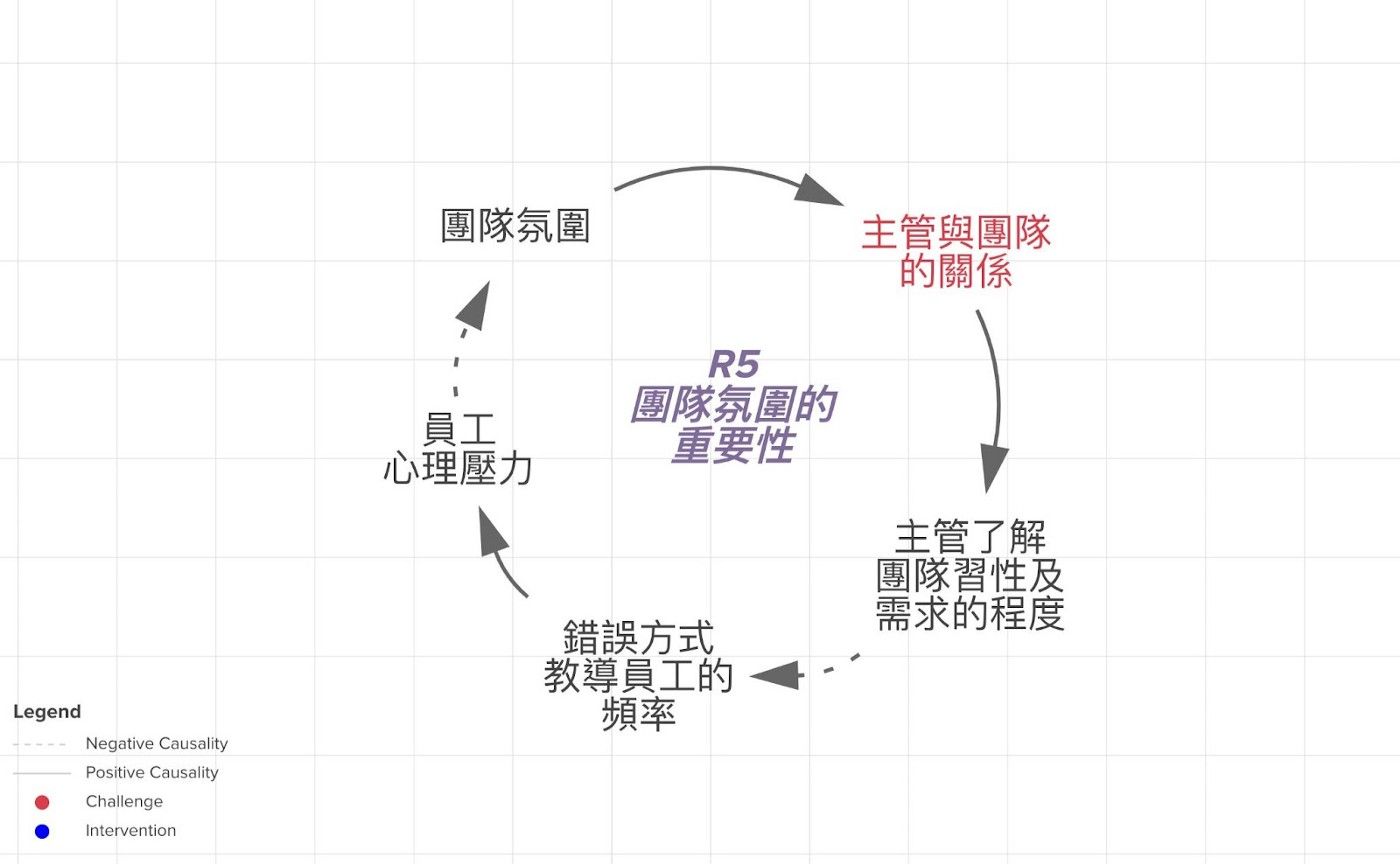
R6 Effective Communication
Because of this invisible pressure, team members basically do not go to the supervisor to discuss matters, unless it is a document that needs to be signed by the supervisor. But this actually made the supervisor even more excited during the meeting, thinking that the subordinate did not come to her to discuss it in advance, and the decision was made without the expected results.
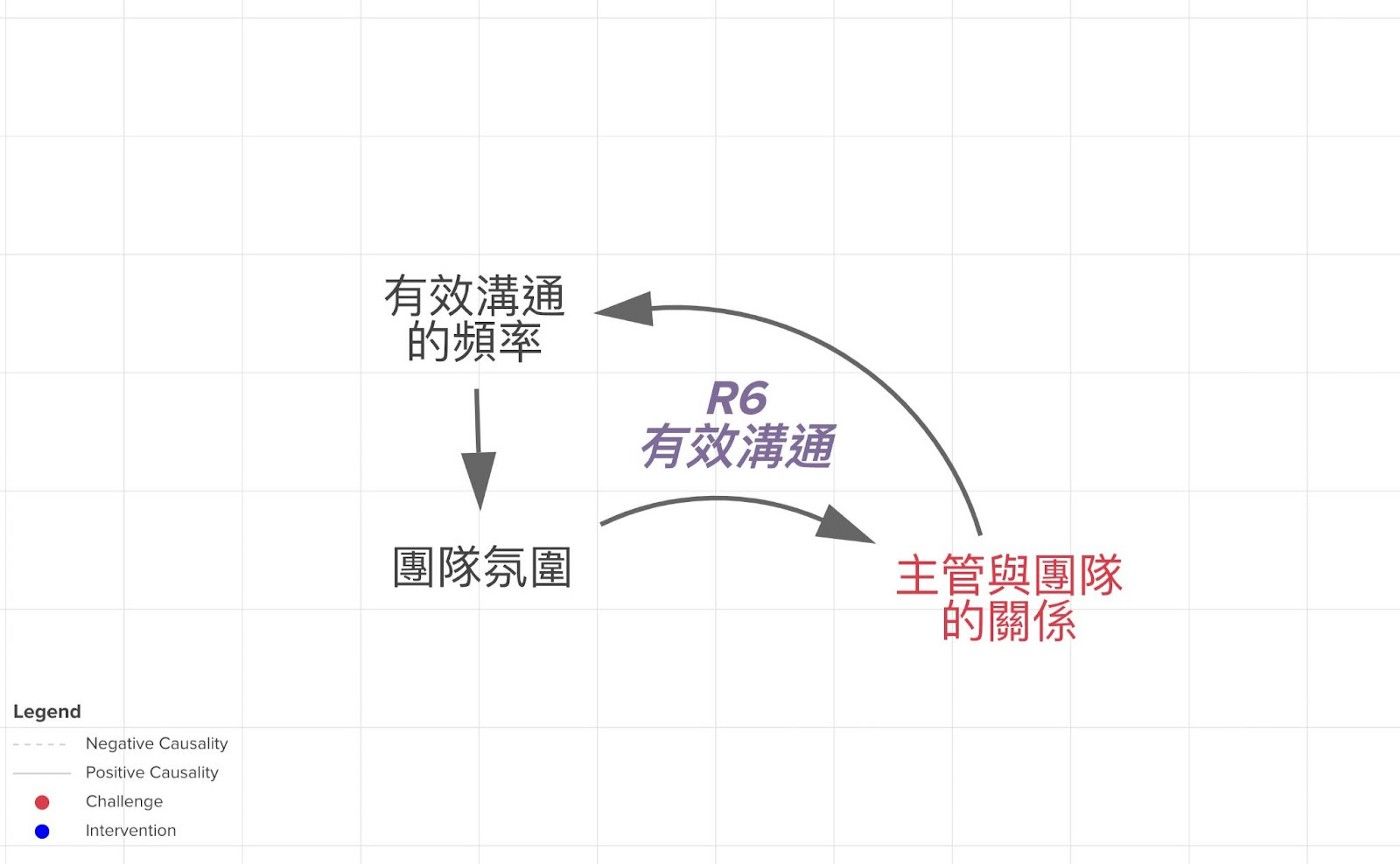
The Importance of R7 Team Stability
Several new members heard that there were such senior employees, but they were still scolded and scolded. They silently thought about whether they had joined the wrong company. During lunch, they even started to ask if their friend's company was recruiting people. People are distracted and unable to concentrate on work.

The supervisor seems to be the spiritual leader of a team, and subordinates usually take the supervisor as a benchmark. However, the supervisor's understanding of the team members is also very important. The so-called "know yourself, know the enemy, and win a hundred battles", you must first understand the subordinates' ideas before you can lead the team forward. Excessive distance and lack of effective communication between subordinates and supervisors can create a push to leave.
organize
"My friend is working in foreign businessman B, and his salary is almost 20,000 more, and he doesn't have to work overtime." When the director of the quality control department was playing golf with his friends on weekends, he heard the treatment of other people, and then he thought about staying in this company. It's been more than 6 years, and I can't seem to find a reason to stay. I'm worried that if I don't leave, there may be no other companies to accept it in the future.
B8 Salary gap causes brain drain
Because of the company's inherent system and clear hierarchy, the salary increase mechanism is relatively conservative. Although there are dividends and three-section bonuses, I am envious when I hear that the foreign company B is increasing its salary every year.
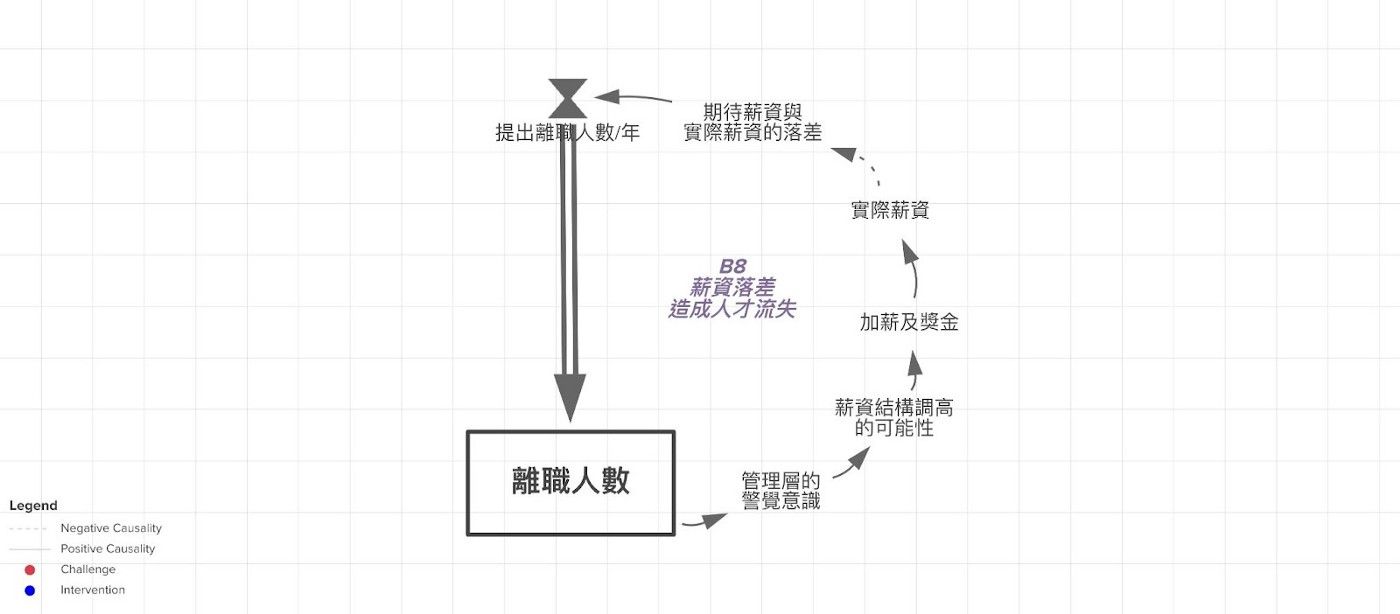
R9 Learning and Challenge Opportunities
As the small supervisor of the quality control department, the work content is stable, but the day-to-day work also makes him a little tired. The company's business is relatively underdeveloped, and no new challenge opportunities are seen in the short term.
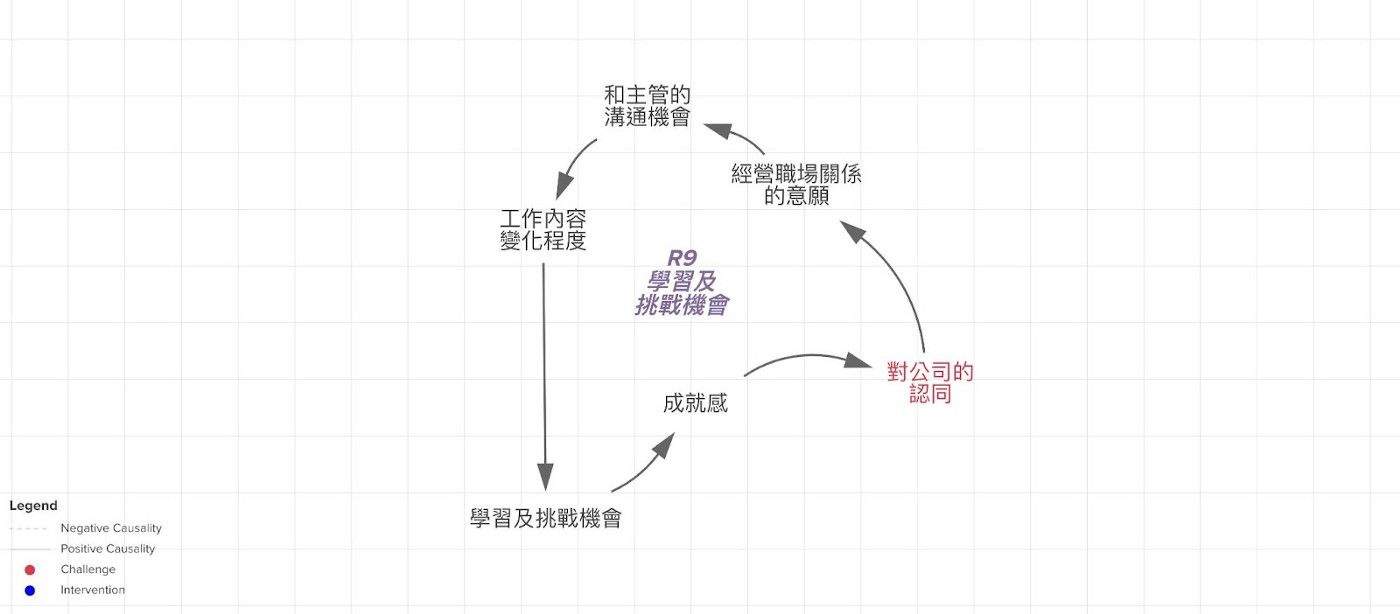
R10 Clarity of Promotion Opportunities
I was promoted to this position 4 years ago. After that, I mentioned it to the supervisor, but because there is no vacancy, even if the supervisor wants to promote it, there is nothing that can be done. I heard that an employee in the next department was recently promoted, and I had clearly cooperated with him before.
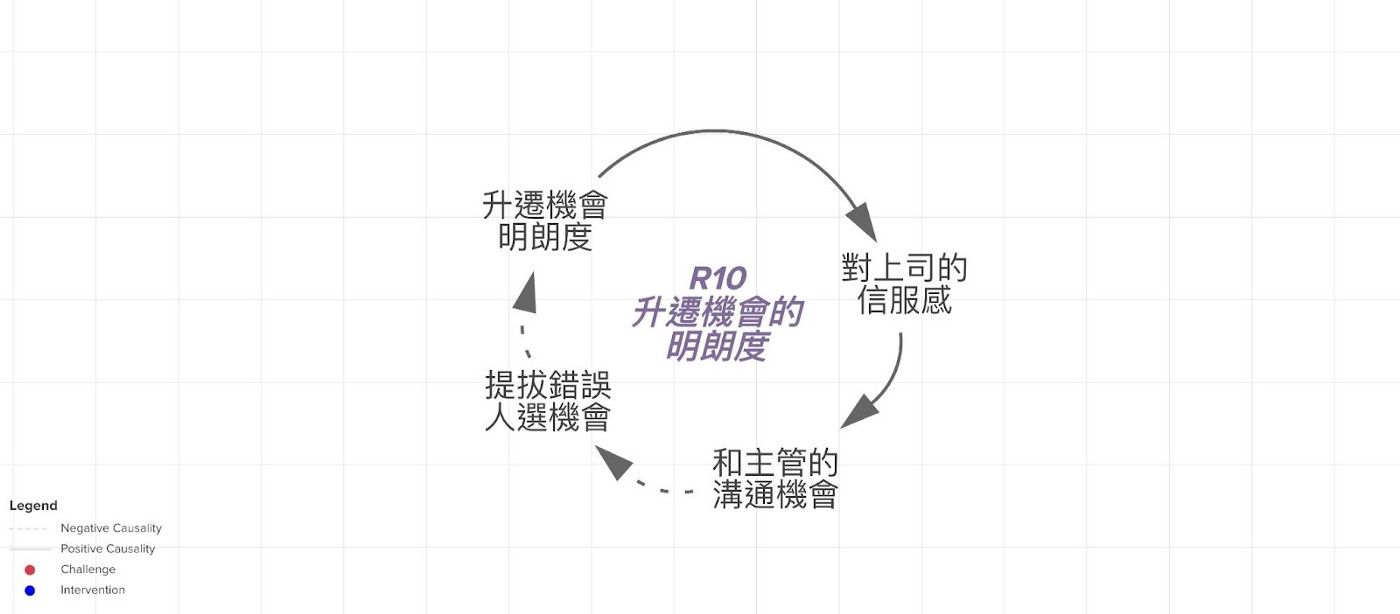
R11 Internal struggles undermine trust
Although the establishment of the quality control department is not large, it often hears that one colleague is fighting with another colleague, and even forms a small group against each other, which makes him a headache who hates office politics, and he has to be careful not to cooperate even in cooperation. Say the wrong thing.
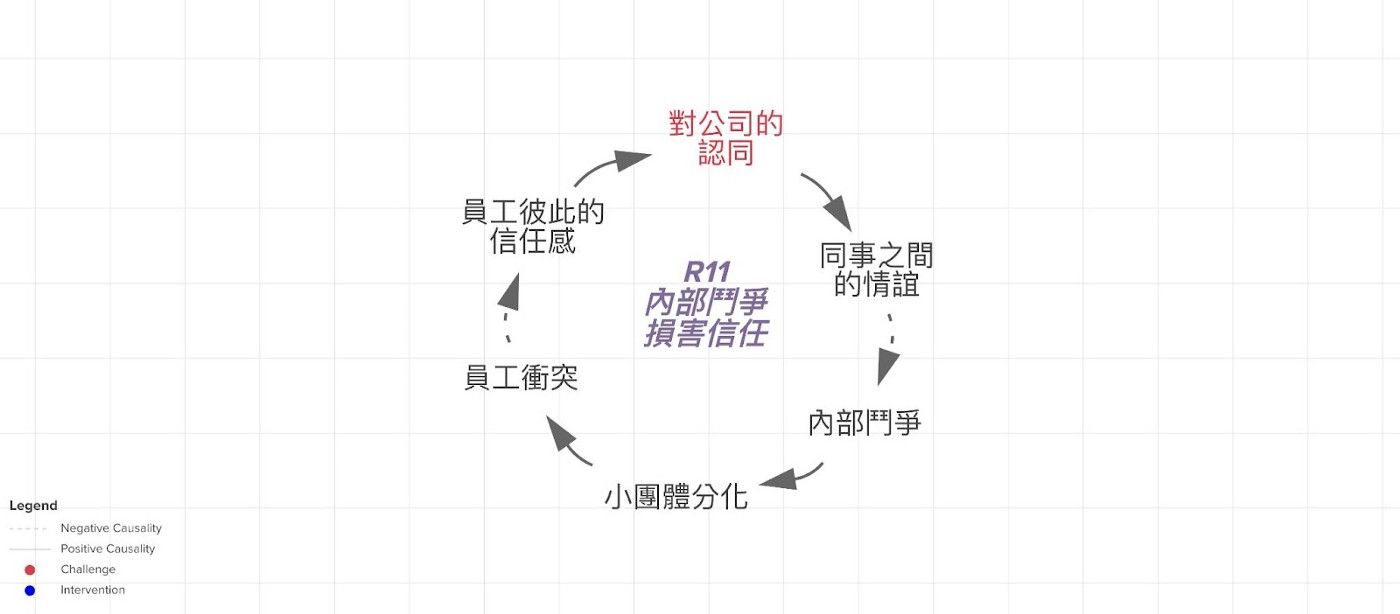
After working for a few years, employees' expectations for salary usually rise gradually, and they also expect more learning opportunities and challenges to grow. Low opportunities for advancement or serious workplace politics within the organization can lead to exhaustion and the idea of leaving.
After Company A and Omplexity co-created the system diagram, they were finally able to systematically understand the current challenges faced by the company in terms of employee turnover, and no longer speculate with one-sided and biased information. In addition, Omplexity defined leverage points (red letters) through methodology, and combined with stakeholder interviews to find corresponding solutions (blue letters), which effectively assisted Company A in formulating follow-up action plans.
( System map link )

If you are interested in systems thinking, please refer to our official website: Omplexity Systems Thinking Consulting Company
Like my work?
Don't forget to support or like, so I know you are with me..
Comment…